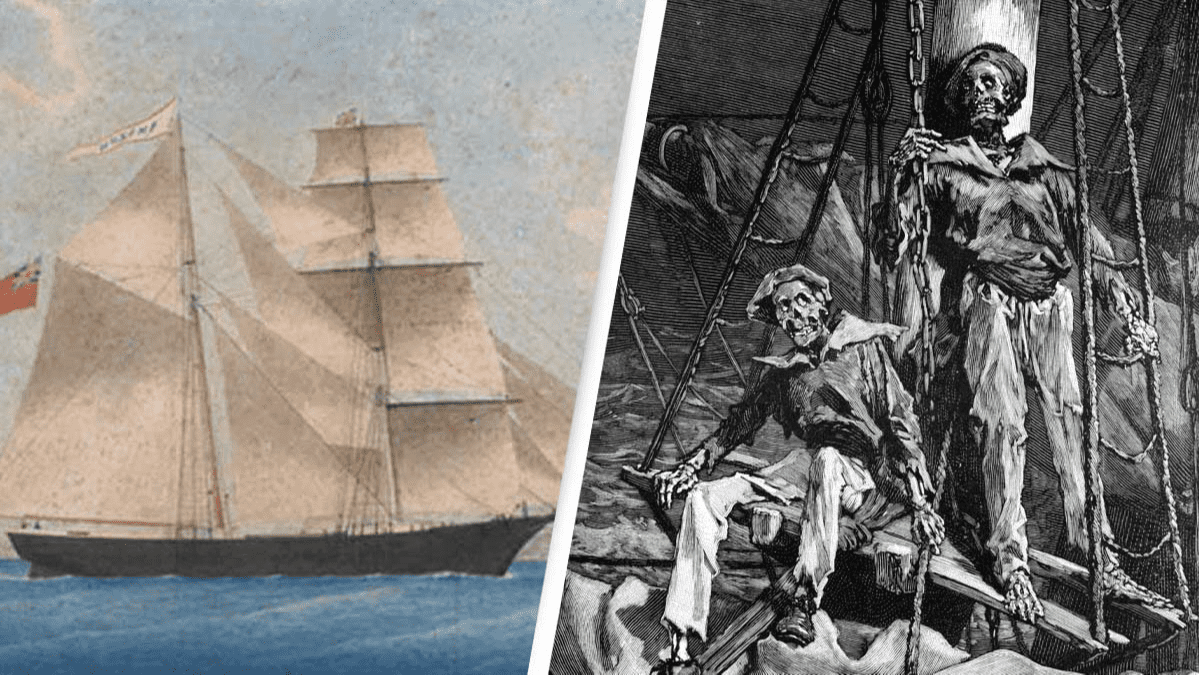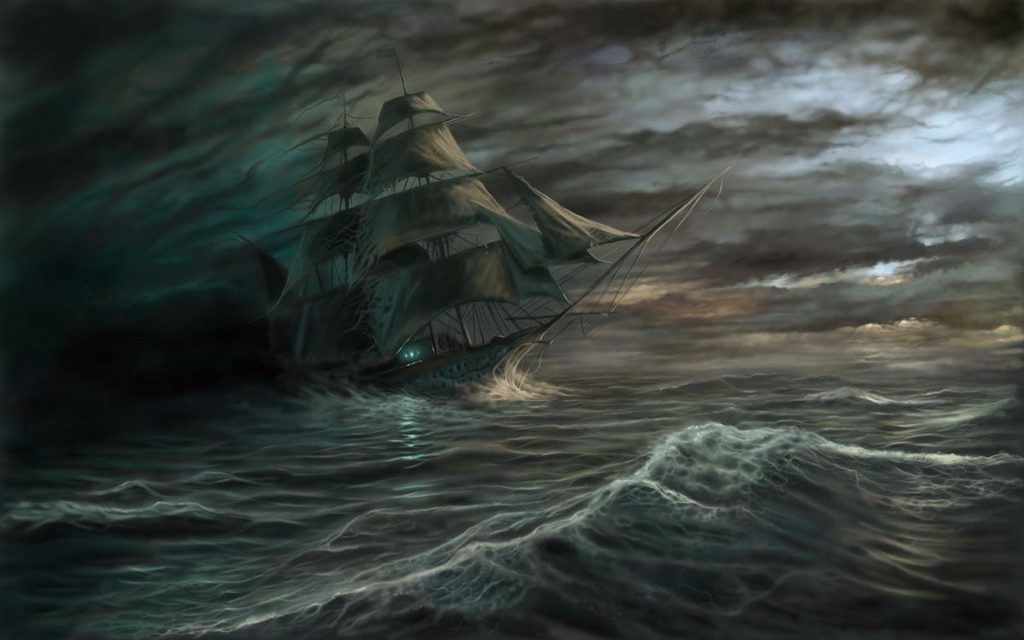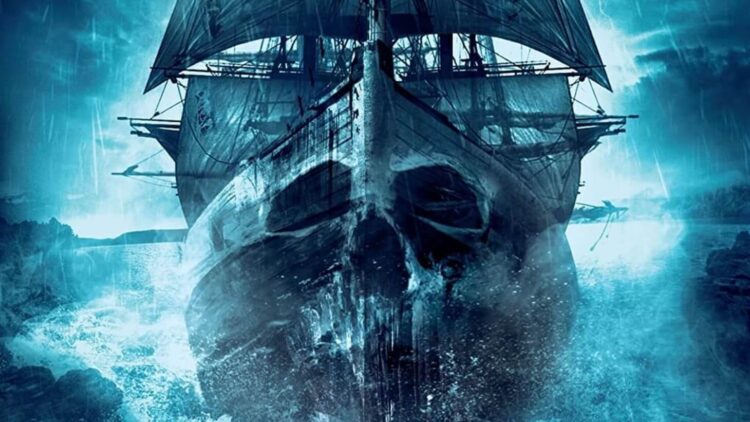Ever since man was fascinated by things he never understood, he respected the forces of nature. And the most prominent amongst these forces remains the sea—an endless behemoth that stretches across the horizon, a vast entity that imposes dominance like no other. Over the decades and centuries, we have made groundbreaking progress in ensuring that the sea and water passages are safe. However, at times, baffling mysteries still leave a lasting imprint. One such ominous case is the tale of Mary Celeste; a ship discovered crewless in the middle of the Atlantic.
Even before she was found devoid of the crew on that fateful day in December 1872, Mary Celeste had quite a reputation. Her first captain had died on her maiden voyage, and she went on to sink a brig soon after. The worst of the blows came in October 1867, when she ran aground off the coast of Nova Scotia. She was sold off to a new owner who decided to put the ship back into the sea. However, the ship wasn’t done with her bloodlust, and she wasn’t after a single person this time. She was after the entire crew.
The Fateful Journey
Mary Celeste started her ill-fated journey in November 1872, after undergoing extensive modification, having run aground a few years back. At the time of her departure, she was in pristine shape and carried 1701 barrels of alcohol. The captain, Benjamin Briggs, was an experienced seaman, and the crew was new yet capable. The ship had originally planned to set sail on the 5th of November, but a storm prevented that. However, by the 7th, the weather turned favorable, and Mary Celeste set sail. This is the last time her crew would even be seen.
On December 4th, 1872, the ship Dei Gratia discovered Mary Celeste off the coast of Portugal. As she wandered aimlessly in the wind, the Dei Gratia’s captain decided to investigate after Mary Celeste didn’t respond to any signals. He sent two men to the ghost ship. The pair soon discovered her name, as the words Mary Celeste were sprawled across her stern, but when they climbed the ladder and into the deck, an unsettling sight awaited them.

The ship was uninhabited. The sails were in poor condition, with some drawn and some missing from the mast. Her main hatch was secure, but another one was open. Also, the ship had considerable water in its hold, and her lifeboat was missing. Something had happened, causing the crew to abandon her midway across the Atlantic.
The trio discovered the ship’s log lying in the captain’s cabin, with the final entry dated nine days prior. According to those notes, the ship’s last official position was 400 miles away. There were no signs of a struggle, meaning a mutiny hadn’t occurred. The ship also had ample provisions and was in good shape, leading the men to wonder what caused this hasty departure.
These findings were passed on to the captain of Dei Gratia, who decided to salvage the derelict to Gibraltar, the nearest official port. As soon as she arrived, the ship was confiscated by the officials and impounded for further examination.
Also Read: The Car Curse Of James Dean – Coincidence Or Not?
Theories and Possible Explanations
The arrival of Mary Celeste set off a plethora of court hearings and legal battles. Suspicion immediately fell upon the crew of th Dei Gratia, as the court believed they had conspired and fabricated the ship’s log. They believed that instead of anything paranormal, the entire occurrence was somehow related to the ship’s crew and her cargo of alcohol. Further examination of the ship revealed cuts and deep gashes on the bow that seemed to have been deliberately made to simulate a collision or rough sea, and the captain’s sword, which was found under his bed, had traces of a substance that looked like blood. Furthermore, a bloodlike substance was discovered on the rails, and there were deep slashes on the ship’s interior, which the officials believed were made by a great axe.
However, this slew of accusations and explanations received a significant setback when it was later scientifically proven that the substances were not blood. So, what had gone wrong? Why was such a good ship abandoned in the middle of the Atlantic? What possible motives could be there? Well, for the mystery to unravel further, we need to step a bit back.
The captain of the Mary Celeste and the captain of the Dei Gratia were close friends who were planning on retiring soon. This, along with the fact that the ship was heavily insured, led many to believe it was an elaborate conspiracy for an insurance scam. However, the theory does have its flaws. To start with, where was captain Briggs? And the crew of Mary Celeste? And if the ship was to be abandoned mid-Atlantic, why did the captain have his own family on board?

The theory of the pirates was quickly ruled out because the cargo was intact. The possible explanation finally pointed at nature being the culprit. It’s believed that the sailors took a smoke below the decks, and the alcohol in the hold mimicked a small explosion, having built up gases. This caused the captain, the officers, and the crew to summarize that an imminent explosion was to take place, and the group piled into a lifeboat and scurried away.
The boat could’ve been tied to the ship, but in the heavy seas, the rope could’ve got untied, leaving the crew at the mercy of the sea. As for Mary Celeste, she drifted off, arriving near the coast of Portugal nine days later. It’s highly unlikely that the crew survived the ordeal, and one can only hope they had a quick death rather than slow starvation.
After the incident, Mary Celeste was sold and bought regularly. With a reputation that preceded her name, she became a feared ship, even more after a third captain died while he was in command. Though the ship was a loss to almost all companies, she was finally sold off for good in 1884 and deliberately ran aground for an insurance scam. This caused a scandal at the time, and even though the defendants were set free (without insurance), one of them went mad, and the other killed himself soon after.
The curse of Mary Celeste had struck again.
Also Read: The Mysterious Disappearance Of The Lighthouse Keepers At Eilean Mor





